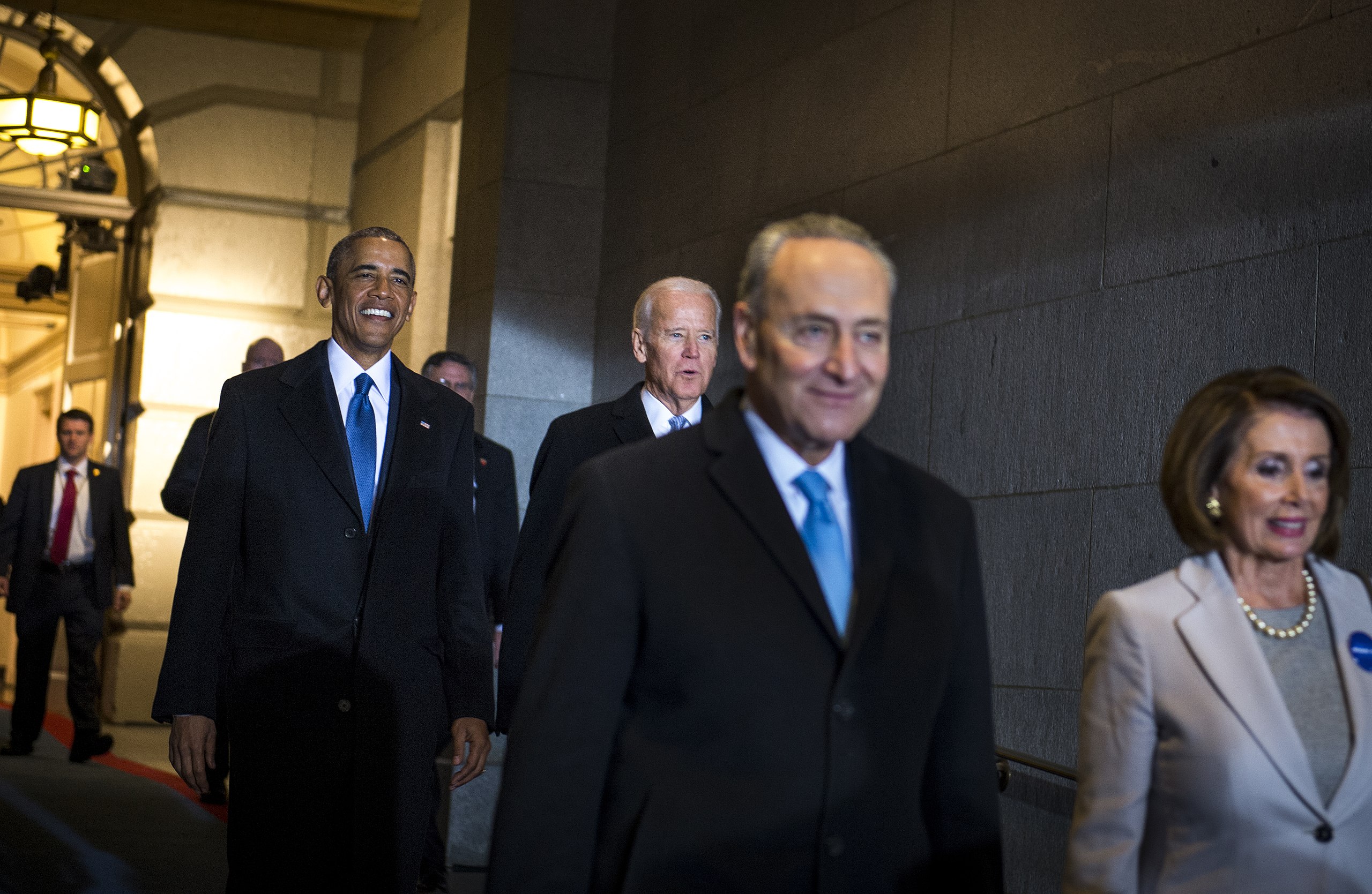Election Night was a “dumpster fire” for Democrats: the nail-biting presidential race when it should have been a landslide; the statewide losses when they were sure they’d flip seats. How is it that in 2020, the year of the greatest public health crisis of our time and the collapse of our economy, Republicans have secured their majority while centrist Democrats battle it out with the party’s progressive wing over how the blue wave stopped short of the shore?
All of this on the heels of Democrats still reeling from the one-two punch in the Supreme Court.
Establishment Democrats have no discernible vision for the future of the party. They have led from behind for years. Instead, progressive leaders like Bernie Sanders and The Squad filled the vacant role as the visionaries for the Democratic Party and energized people of color and younger voting blocs with bold, fresh ideas like Medicare for All and the Green New Deal, once considered extreme by Democrats but since normalized and viable policies. For being a minority within the Democratic Party and roundly disliked by the establishment, progressive leaders have had tremendous success pulling the future of the Democratic Party forward. The days of touting policy ideas that put bipartisanship before progress are over.
Republicans are impressively effective at winning races and thwarting leftist policies, and they proudly say all the parts of their strategy out loud. They are also not afraid to be a party of extremes (look no further than Trump and his cabinet). But Democrats can’t replicate every approach that Republicans have taken because they have a different electorate than Republicans. For one, they are not a homogenous voting bloc, nor have they tried to unify the party’s ideology. While Republicans have found a strategy that works for their base, spinning talking points that boil complex issues down to one-liners of questionable truth like calling the election “RIGGED,” the Democrats’ strategy of repeating “We’re not Trump!” clearly wasn’t enough to satisfy voters hungry for another option. Many Latino and Black voters were not convinced.
Lindsey Graham wasn’t wrong when he said, “you wasted a lot of money,” on Jamie Harrison’s race in South Carolina. The mega-fundraising strategy used by the DCCC and long-time Democratic consultants is from the old order. It harkens back to the issue that 77 percent of Americans find with overspending in elections rather than taking a more grassroots approach to earning votes that have led many progressives to win elections.
Record breaking fundraising numbers led to heartbreaking results in Kentucky, South Carolina and, of course, Texas. At the time of this writing, Democrats had lost five incumbents in Congress. Once again, Texas Democrats did not win the well-funded races they needed to take the Texas House majority. Democrats don’t have the strategy or the grassroots activism to shape the party for a diverse and young electorate, but progressives have proven over and over that they do.
It’s true that a significant reason why Democrats floundered is because of countless long- and short-term right-wing tactics like gerrymandering, voter suppression, and voter intimidation. But if Democrats want to win rather than merely maintain their status quo, they can’t continue to use Republicans as a scapegoat for their political failings because it shields them from facing their own weaknesses as a party.
Leadership researcher Brené Brown writes that it is not fear that stops courageous leadership, but armor. There is no room for armor right now. Democrats need courageous leaders on the left to shape the party. Progressives are bold in ideology and strategy in the way Republicans are, a parallel strategy that seems to have worked in their favor. If you believe that the will of the people is not being represented, that our country’s democracy is dying — then you’ve already lost faith in both parties. If the Democratic party cannot heal, it will break.

